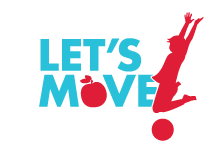
Community Garden Checklist
If you're looking for an activity that people of all ages can enjoy, start a community garden. Rallying support from your neighbors, friends or community-led organizations is a great way to start a garden in your back yard -- so to speak.
Urban communities often find patches of land to host community gardens, and invite participants to help plant, harvest and enjoy the produce -- and in turn incorporate the necessary fruits, vegetables, vitamins and nutrients they need to stay healthy into their diets. The USDA's People's Garden initiative offers lots of useful resources and a supportive network for both first-time planters and seasoned harvesters.
Before you start a garden of your own, read and download this step-by-step guide, which offers important information about how to safely grow your own fruits and vegetables with others in your community:
Engage Your Community
Begin by bringing people and different organizations together to learn which issues are important to your community. Discuss how a community garden – whether a communal space or individual plots – could serve the needs of the community. If a community garden will benefit the community, build on this momentum by holding regular meetings to collaborate on ideas and goals. Develop a plan of action. Get people energized and organized.
Identify Resources
Forming local partnerships is an excellent way to leverage resources and gain access to needed materials, tools, funding, volunteers, and technical assistance. USDA’s People’s Garden website has how-to videos and databases filled with garden-based learning curricula, free seed and funding sources, and healthy gardening practices. You can call on an Extension Master Gardener volunteer in your area to help with gardening challenges. The long-term success of your community garden will depend a great deal on relationships with partners. And be sure to check out the Community Garden Resource Guide.
Choose a Site
Across the country, community gardens are becoming an anchor for neighborhood revitalization. Community gardens range in purpose from increasing access to fresh, healthy food in rural towns to providing safe green spaces where youth can play in urban cities. What type of community garden will your neighborhood be planting? Knowing this information will narrow your search for a site. If growing food, find a location that receives at least six hours of direct sunlight per day with easy access to water. Check if the land you would be growing on has proper drainage. Once you identify an ideal site, find out who owns the land. Contact the landowner and discuss next steps which may include obtaining permission through written agreement or lease and getting liability insurance.
Garden Healthy
Before you start planting, it is important to research the history and past uses of your chosen site. Once the past uses have been determined, take samples of the soil and have them analyzed to find out soil type and quality. EPA has step-by-step guidelines on how to do this. Consult with your state environmental agency, local health department, or county’s Cooperative Extension office to learn how to take a soil sample and to determine what kinds of samples you should take. The quality of the soil can have an effect on the design of your garden.
Design Your Garden
Every community garden is different based on its specific size, location, and mission. Design your garden to fit the needs of the community it serves. Consider factors such as age-appropriate design, accessibility, protection from animals or vandalism, storage of tools, and space to gather. Incorporate sustainable gardening techniques such as: using native plants, composting, mulching, applying an integrated pest management approach, creating a habitat for wildlife, using water wisely or installing a rain barrel. Use the USDA Plant Hardiness Zone Map to determine which plants will thrive in your part of the country.
Get Growing
Start gardening and implementing your community garden program. Once the project is up and running, let everyone know! Gain greater community support by welcoming visitors and sharing updates on how the neighborhood is benefiting from the garden’s existence. Over time, revisit the plan and make any needed changes based on lessons learned or feedback from partners and neighbors. Remember to plan ahead so that the garden will continue to grow for seasons to come.
Information provided courtesy of USDA’s People’s Garden Initiative. For more gardening resources visit www.usda.gov/peoplesgarden.




